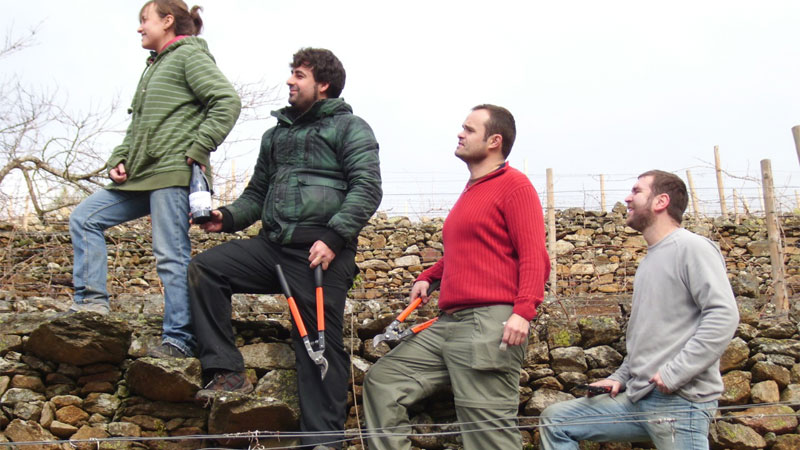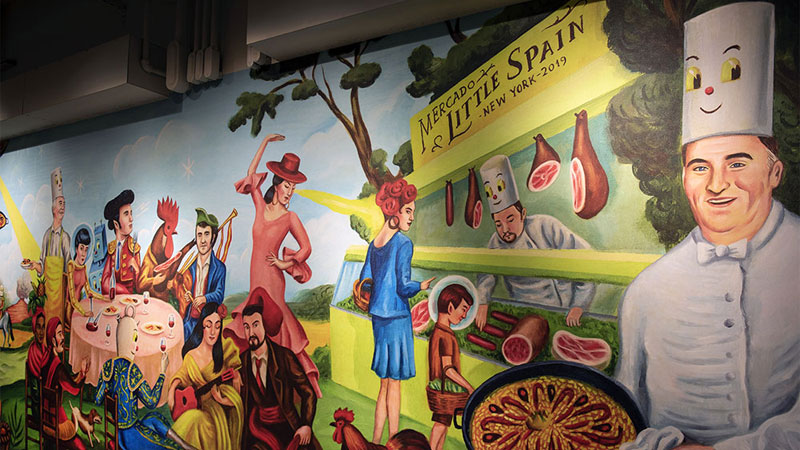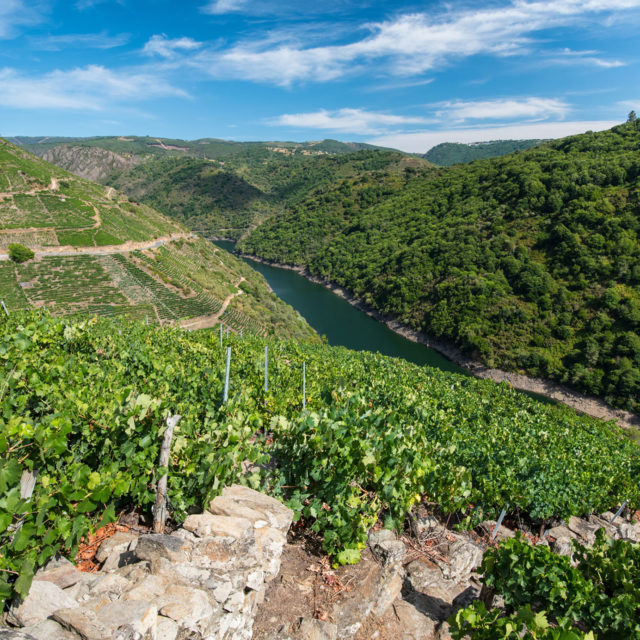Ask any Spaniard about the country’s wine industry and they’ll tell you two things. One, that wine is made in every region in the country. And secondly, that great wine is made in every region in the country. Outside of Spain, however, this diversity is nowhere near as well represented.
“Spain suffers from the fact Rioja, Rías Baixas, Ribera del Duero, and Cava are well-known and well-loved by American drinkers,” says Master Sommelier Andy Myers, the beverage director for José Andrés’s ThinkFoodGroup. “Try explaining to people why they should be drinking Mencía from Ribeira Sacra or Treixadura from Monterrei, and things get a bit tricky.” (Tray-sha-du-rah, in case you were wondering.)
This is a shame, he says, because no other country right now offers the “excitement and bang for your buck” that Spain does. Industry professionals agree, pointing to an ongoing Spanish winemaking renaissance. Rediscovered regions, rejuvenated plots of abandoned old vines, and audacious producers turning their backs on denomination rules: These are the keys to awakening the sleeping giant that is Spain’s wine industry.
“It’s not an evolution, nor a revolution, but rather an involution going back to ancient grape varieties,” Spanish wine critic and author Luis Gutiérrez notes in a 2017 Noble Rot article. “The future lies in the past.”
High in the vertigo-inducing vineyards of Ribeira Sacra, in Galicia in northwestern Spain, a handful of younger winemakers have spent the best part of 20 years quietly retraining old Mencía vines. They include Laura Lorenzo of Dominio do Bibei; Pedro Rodríguez of Guímaro; Roberto Santana, Alfonso Torrente, Laura Ramos, and José Martínez, who together form the Envínate (Wine Yourself) project.
Why volunteer to make wine in such inhospitable conditions? They produce expressive varietal and blended reds — wines that sing of the granite, schist, slate, and iron soils in which they are grown, and that “live in a magical palate-place somewhere between Burgundy and Cru Beaujolais,” Myers says.
Known as the mago de los vinos (wine wizard), heavily bearded Raúl Pérez is less winemaker and more Spanish oenological icon. For three centuries, his family has worked the terraced vineyards of nearby Bierzo. A short hop east from Ribeira Sacra, the mountainous region in northwestern Spain is also known for elegant Mencía wines and low-yielding old vines.
Pérez completed his first vintage at his family’s winery in 1994, when he was 22. Nowadays, he has a hand in multiple projects in native Bierzo, as well as Ribeira Sacra, Madrid, Ávila, Asturias, Portugal, and South Africa.
The winemaker’s Bierzo projects focus on single-plot Burgundian-style winemaking, in vineyards just outside his hometown, Vatuille de Abajo. Perez shares one such site — El Rapolao — with a few like-minded pioneers, including Diego Magaña (Dominio de Anza) and César Márquez Pérez (César Márquez Bodegas y Viñedos).
Three of the wines from this plot are poured at Clay, a restaurant in Harlem, NYC. The restaurant’s wine director, Gabriela Davogustto, champions Bierzo and its “elegant, structured, and balanced wines.”
Advocates like these are invaluable. Félix Meana, co-owner and director of operations at Cúrate in Asheville, N.C., believes Mencía wines from northwestern Spain are among the country’s most exciting. And, while Galicia is best known for making white wines from Albariño and Godello, the region’s lesser-known white varieties such as Doña Blanca and Treixadura should be savored for the “beautiful, refreshing blends” they produce, he says.

Two hundred miles south of Galicia, a one-hour drive west of Madrid, similarly enticing high-altitude winemaking takes place in the Sierra de Gredos (Gredos mountains). Here, red grape Garnacha — the Spanish name for Grenache — is king. Though if you’re blind tasting it, Meana says, you’ll be convinced you’re drinking Burgundian Pinot Noir.
Winemaking duo Fernando Garcia and Daniel Gómez Jiménez-Landi founded Comando G in the Gredos mountains in 2008. The pair makes delicate Garnacha wines from low-yielding old vines planted in granite soils. In rarefied circles in the U.K. and U.S., Comando G’s wines enjoy an almost cult-like following.
If you wanted a yardstick to measure whether or not a region is “happening,” the best place to start would be to check whether Envínate is currently producing wine there. The pioneering producer makes some of Spain’s most desired wines in a number of Atlantic-influenced regions around the country.
In Taganana, on the northeast coast of Tenerife, one of Spain’s volcanic Canary Islands, Envínate works 300-year-old vines alongside the likes of Suertes del Marques, one of the island’s other finest producers.
Ancient vines grow here untrained and the soil must be worked by hand or horses. There’s not a pesticide or fertilizer in sight. Grape juice transforms into wine with only the aid of wild yeast, resulting in fresh aromatic wines that carry a whiff of flint and smoky minerals. Volcanic soils and minimal intervention might be wine marketing buzzwords these days, but this is the real deal.
Don’t be fooled into thinking Spain’s renaissance is confined to obscure, lesser-known regions, either.
“There’s a revolution happening in Priorat right now,” Myers says. Winemakers are producing lower-alcohol wines, and favoring traditional, local Garnacha and Cariñena (Carignan) over the “international” varieties (Cabernet Sauvignon, Merlot, and Syrah) that first put Priorat on the map. Producers such as Terroir al Límit offer an ever-increasing selection of wines of balance, as opposed to wines of power.
In 2012 in Cava, despite the fact his family’s Raventós i Blanc winery is inextricably tied to the region’s history, Pepe Raventós had the audacity to secede from the Cava D.O. and create a new one. “He wanted to make a better wine than the law was allowing him,” Myers says.
This situation was mirrored in Rioja in 2016, when famed producer Artadi announced it no longer wanted to be associated with the region’s DOC because the name didn’t represent the quality its wines displayed.
The Consejo Regulador, or governing body of the Rioja DOCa, responded rapidly, announcing that from the 2017 vintage on, three new, much more geographically precise categories of Rioja would be introduced. Importantly, those who wished to, and followed the strict rules, could start producing and labeling single-vineyard wines under the term Viñedo Singular.

Everywhere in the country, from the Balearic Islands to Valencia, Aragón, and beyond, winemakers are trying to showcase their regions’ terroirs. But does any of this matter if, here in the U.S. and other international markets, all people think about when you mention Spanish wine is ripe-and-ready, oaked reds from Rioja and Ribera del Duero?
In March 2019, Hudson Yards — the largest private real estate development in the United States by area — opened to great fanfare in New York City. As part of the $20 billion, 27-acre development, José Andrés’s ThinkFoodGroup launched Mercado Little Spain, a 35,000-foot food hall and Andrés’s “veritable love letter to Spain,” according to its website.
With three full restaurants and three separate bars, the Mercado is the ideal location to showcase the “new” wines of Spain. “We’re changing the entire landscape with this,” says Myers, who oversees the beverage program for the whole project.
Currently, there are 20 whites and 20 reds on offer by the glass. Just one of those reds is a Rioja. Eventually, there will be more than 400 labels selling by the bottle. “With the way we’ve already been selling wine up here,” Myers says. “I think Spain is going to be out of wine in about six months. It’s terrifying.”
